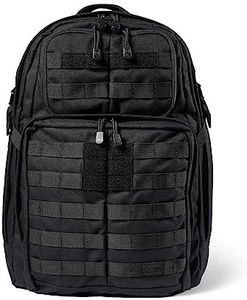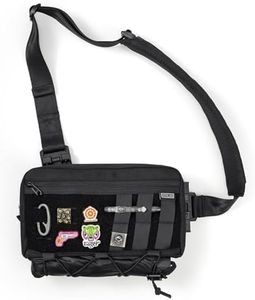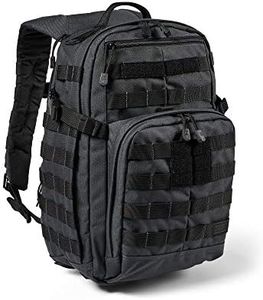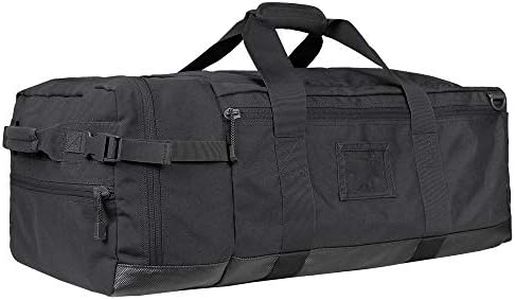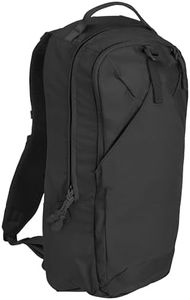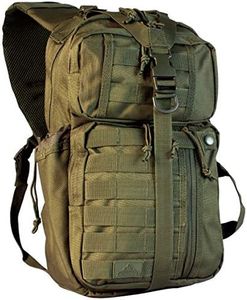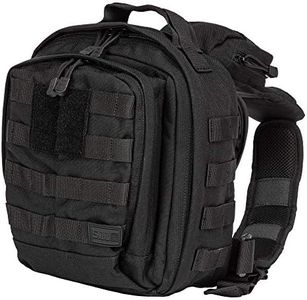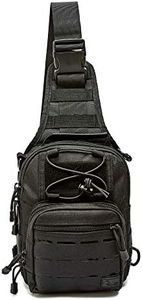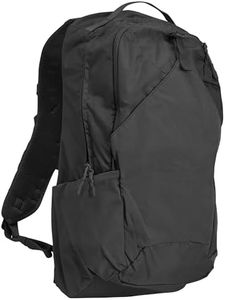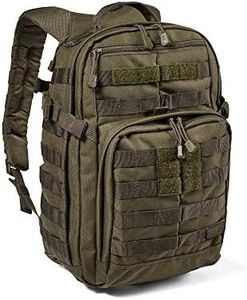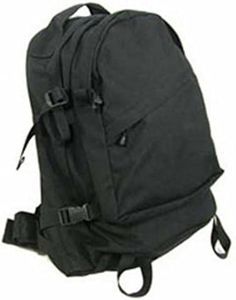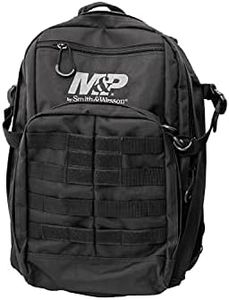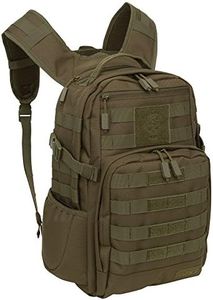We Use CookiesWe use cookies to enhance the security, performance,
functionality and for analytical and promotional activities. By continuing to browse this site you
are agreeing to our privacy policy
10 Best Concealed Carry Backpacks
From leading brands and best sellers available on the web.Buying Guide for the Best Concealed Carry Backpacks
Choosing the right concealed-carry backpack isn't just about style; it’s about comfort, access, and safety. You want a bag that securely stores your firearm while still being easy for you to use in a hurry. It's important to think about how you'll use the backpack every day, how much space you need, and how quickly you want to be able to get to your concealed carry. Focus on function over fashion, and make sure the backpack fits your body and lifestyle.Concealment Compartment AccessThis spec refers to how and where you can access the compartment designed to hold your firearm. Quick and intuitive access is key for any concealed-carry setup, as fumbling can be dangerous when seconds matter. Some backpacks offer side, top, or rear access to the firearm compartment. Side-access panels are popular for quick right- or left-handed reach, while top or rear options can add stealth but require practice. Think about your dominant hand and daily routine—do you need ultra-quick access for self-defense, or is your priority discreet storage with less focus on instant retrieval?
Compartment Size and FitThis specification details the size and shape of the backpack’s concealed-carry pocket. A proper fit ensures your firearm stays secure and doesn’t move around, all while remaining accessible. Some compartments are designed for subcompact pistols, while others can hold full-sized handguns. If you carry a small handgun, a streamlined compartment works well and keeps things tight; for larger firearms, choose a roomier pocket but pay attention to retention features so your weapon isn’t loose. Measure your firearm to compare it to manufacturer dimensions—a snug fit is ideal, but you should still be able to draw smoothly.
Holster Compatibility or Built-In HolsterMany backpacks either include a sewn-in holster or provide hook-and-loop (velcro) areas to attach your own holster. Built-in options can be fast and secure but may not fit every firearm, while adjustable holster systems allow customization for different gun types. Decide if you want a pack-and-go system using a built-in holster or prefer one that lets you use your favorite holster for familiar control. If you use a specific holster style or frequently swap guns, look for a bag with flexible holster compatibility.
Overall Capacity and OrganizationThis is how much space the backpack offers, aside from the concealed compartment. If you plan to use the backpack as an everyday bag, you'll need room for daily carry items like a wallet, water bottle, electronics, or even gym gear. Smaller packs stay lightweight and less noticeable, good for minimalists or quick trips, while larger bags handle more gear but can be bulky. Match the capacity to your typical loadout—don’t overdo it if you only need to carry essentials.
Comfort and AdjustabilitySince you'll likely wear the bag for extended periods, comfort is crucial. Features like padded straps, breathable back panels, and weight distribution design all contribute to how the backpack feels over time. Some have adjustable chest or waist straps to keep the load stable during movement. Lightweight, ergonomic bags are best for everyday carry and long walks; heavier-duty models may suit those carrying more gear. Consider how the bag feels when fully loaded, not just empty.
Material and DurabilityThe material of the backpack affects both security and long-term use. High-quality nylon or polyester offers water resistance and tear strength, while heavy-duty zippers and reinforced stitching provide extra safety. If you'll expose the backpack to rough environments or harsh weather, go for more rugged materials. For city or office use, a lighter, more discreet style might be preferable. Durability matters if you expect heavy daily use, while casual users may prioritize lightness.
Discreet AppearanceA good concealed-carry backpack shouldn't scream 'I have a gun.' Discreet looks resemble regular backpacks and don't attract unwanted attention, which is vital for safe and legal concealed carry. Bags that look tactical or overly specialized can stand out, while low-profile designs blend in everywhere. If blending in is a priority—at work, school, or around town—choose a backpack with a non-tactical, everyday appearance.
